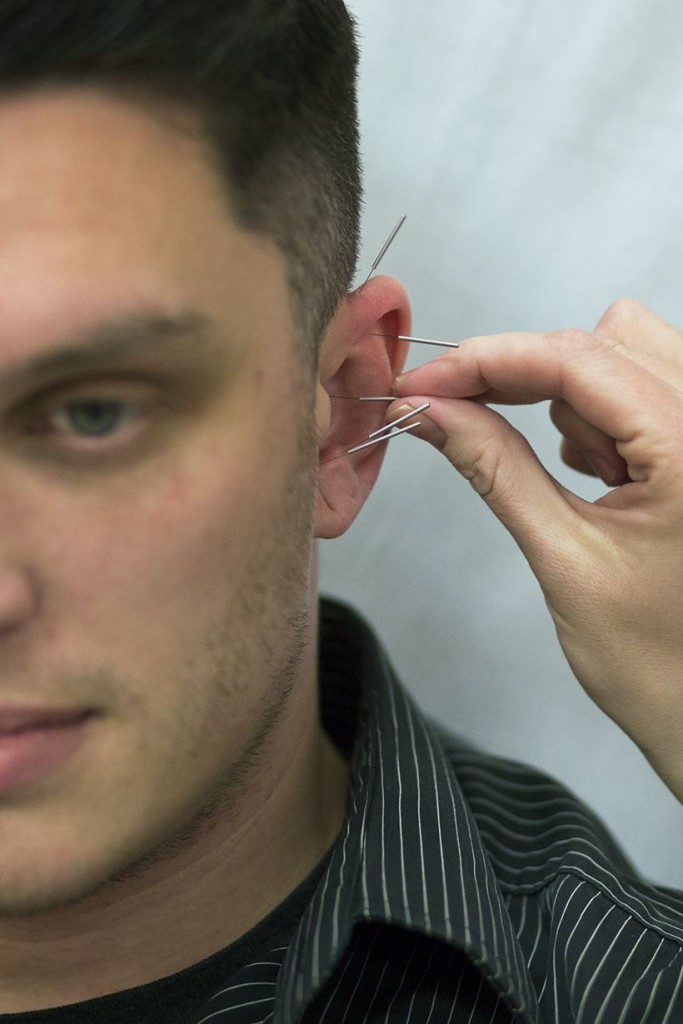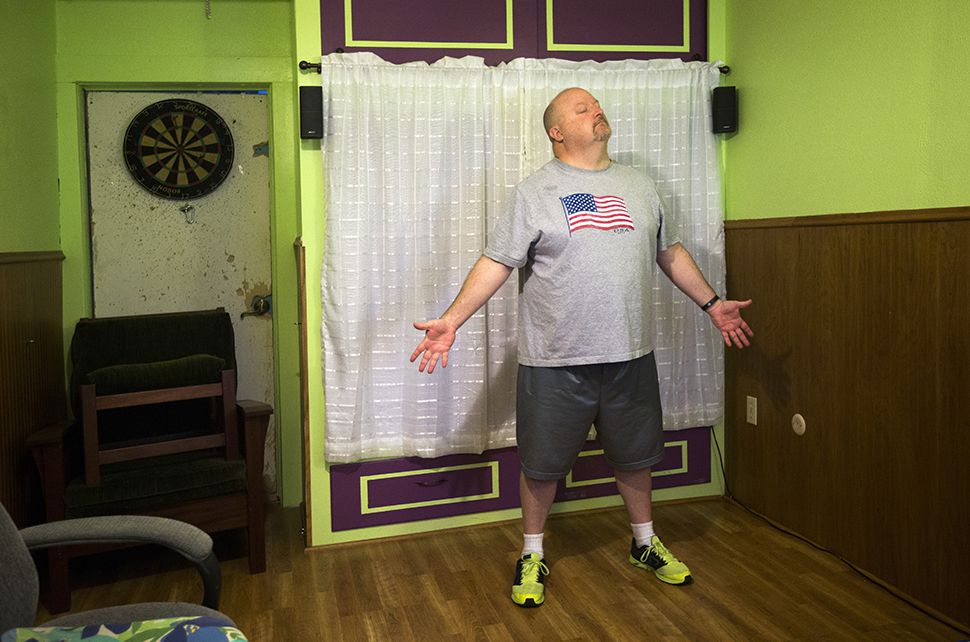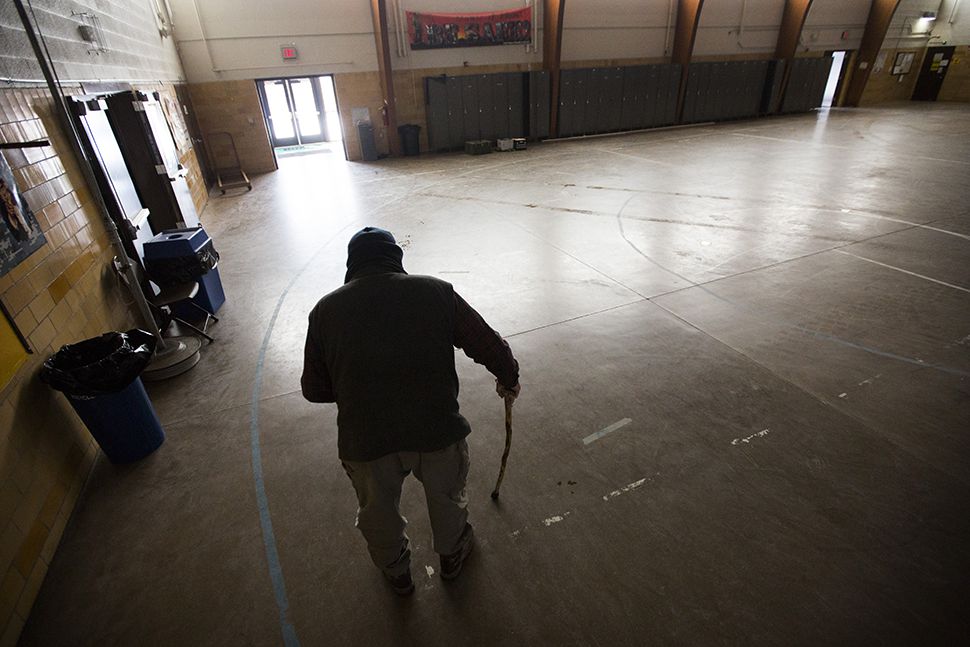Veterans: A Battle with Pain (Part II)
MILITARISM, 11 Apr 2016
Mark Brunswick and Brian Peterson - Star Tribune
VA kicks vets off pain meds in favor of alternatives like yoga and acupuncture, but it’s not keeping up with the desperate demand.
The backroom of the James Ballentine VFW Post #246 in Minneapolis’ Uptown neighborhood looks more appropriate for meat raffles and ladies’ auxiliary meetings than for medical treatments.
But one night this spring, the post — just 7 miles from one of the country’s major Veterans Affairs medical centers — became the best refuge for veterans struggling to cope with the pain of injuries from their military service. Eight acupuncture chairs, four chiropractic chairs and three treatment beds were set up, awaiting vets who would soon be arriving.
Alternative therapy — from acupuncture to yoga — is a key part of the VA’s new effort to reduce vets’ dependence on highly addictive pain medication. The Minneapolis Veterans Medical Center is helping lead the effort, with a first-in-the-nation chronic pain program that emphasizes education and other alternatives to drugs.
Iraq veterans Zach Williams and Ryan Trunzo overdosed after battling chronic pain and withdrawls from pain medication.
But the free services offered by the Minneapolis VFW post are not authorized by the VA. They are an outgrowth of the frustration and anguish many vets feel about being ordered into a program that can serve only a fraction of those in need. The Minneapolis VA’s inpatient pain program, for example, has managed to graduate only 33 vets in the year that it has been operating.
The VA says it’s adding more services. But as more vets find themselves cut off from prescription painkillers, the demands on the strapped VA system are bound to grow.
“You don’t have a real comprehensive, coordinated project available to these vets,” said Dr. Gary Kaplan, a clinical associate professor at Georgetown University School of Medicine who recently attended a conference about the military’s pain management program. “It’s a tragedy.”
Shayne Johnson came to the “feed ’em & treat ’em” event at the VFW. The post, which provided free appetizers and a sit-down dinner, sponsored the event with Northwestern Health Sciences University in Bloomington, which provided free chiropractic evaluations, acupuncture and massage.
Johnson suffers chronic pain as a result of his service in Iraq as a Navy Seabee. He said the chiropractic care he gets from Northwestern and from a private provider he pays out of his pocket have turned out to be better than the alternatives offered at the Minneapolis VA.
At the VA he got one series of chiropractic treatments several years ago, but he said the appointments were difficult to schedule, often as much as three weeks out. He said the VA also kept pushing muscle relaxants, and he was concerned about getting dependent. He would return to the VA if programs were better. “I would go there all the time if I could get a chiropractic visit.”
Vets say they have waited up to two months for an appointment with the Minneapolis VA’s sole chiropractor.
ROUGH: Marine Corps veteran Robin Smith struggles with pain all the time. “You don’t sleep. You get a little rough and you don’t smile a lot.” Smith initially enrolled in the Minneapolis VA Pain clinic earlier this year, but was told he could only get acupuncture ten times a year, per VA policy. He now pays for it himself in Grand Rapids.

SEEKING RELIEF: Dominic Anspach of Minneapolis underwent an acupuncture treatment at a VFW event that was free but was not authorized by the VA.
Christopher Cassirer, president of Northwestern, said he has offered to help the Minneapolis VA expand its chiropractic treatments, to no avail.
While the VA says it is embracing alternative therapies, critics, including members of Congress, say the VA appears to want to keep the services under its own roof, where it can monitor treatment and control costs.
The Minneapolis VA hired its first chiropractor in 2014 and was overwhelmed by the response, with more than 850 visits in less than five months. Because of the demand, 23 veterans have been allowed to make appointments with chiropractors outside the VA. The Minneapolis VA said it hopes to have its second chiropractor in place this summer.
Dr. Carolyn Clancy, then the interim VA undersecretary of health, told a congressional committee in June that the VA is conducting research to identify predictors for veterans who abuse opioids and which veterans might respond best to nonnarcotic treatments. “We have some research going on in that area and we have a lot more to learn,” she said.
Success stories
Few dispute that the VA had a painkiller problem. Prescriptions for narcotics such as oxycodone and methadone had tripled nationally in the 11 years before the VA realized it had created a crisis of drug dependency among veterans.
The new goal: Instead of doling out addictive drugs that mask chronic pain, identify and treat its root causes.
Late last year, the National Institutes of Health and the VA announced 13 research projects totaling about $21.7 million over five years to study nondrug approaches to pain.
Given the limited number of people able to enter the trials, it could take at least five years to get productive data, said Georgetown’s Kaplan.

GRADUATE: After suffering years of chronic pain, John Szuch, an Air Force tail gunner in the first Gulf War, enrolled in the VA’s chronic pain rehabilitation program. After graduating in November, Szuch has a new lease on life and does tai chi at home a few times a week.
Air Force veteran John Szuch has no doubt about the value of these alternative approaches. “It literally changed my life,” he said.
Szuch was a tail gunner on B-52s, flying combat missions during the first Gulf War.
His service left him with a herniated disc and a severe stabbing pain in his thigh. Years of pain medications did not help.
He had tried meditation and sleep therapy. He was sedentary and anxious. His VA psychologist recommended he apply to the Minneapolis VA’s chronic pain rehabilitation program.
The four-week intensive residential program is the only pain program in Minnesota accredited by the Commission for the Accreditation of Rehabilitation Facilities.
Patients meet with practitioners from seven disciplines to develop a treatment plan that includes hourlong group sessions led by psychologists, occupational therapists, pharmacists and nurses.
Up and running for a little more than a year, it has graduated 33 vets, including Szuch.
“You have to be at the bottom of the barrel for the people offered this class,” he said. “People who go into this class, we’re in some bad places mentally. But you have to have the willingness to still want to get better.”
Yoga videos and needles
To continue reading please Go to Original – startribune.com
DISCLAIMER: The statements, views and opinions expressed in pieces republished here are solely those of the authors and do not necessarily represent those of TMS. In accordance with title 17 U.S.C. section 107, this material is distributed without profit to those who have expressed a prior interest in receiving the included information for research and educational purposes. TMS has no affiliation whatsoever with the originator of this article nor is TMS endorsed or sponsored by the originator. “GO TO ORIGINAL” links are provided as a convenience to our readers and allow for verification of authenticity. However, as originating pages are often updated by their originating host sites, the versions posted may not match the versions our readers view when clicking the “GO TO ORIGINAL” links. This site contains copyrighted material the use of which has not always been specifically authorized by the copyright owner. We are making such material available in our efforts to advance understanding of environmental, political, human rights, economic, democracy, scientific, and social justice issues, etc. We believe this constitutes a ‘fair use’ of any such copyrighted material as provided for in section 107 of the US Copyright Law. In accordance with Title 17 U.S.C. Section 107, the material on this site is distributed without profit to those who have expressed a prior interest in receiving the included information for research and educational purposes. For more information go to: http://www.law.cornell.edu/uscode/17/107.shtml. If you wish to use copyrighted material from this site for purposes of your own that go beyond ‘fair use’, you must obtain permission from the copyright owner.

